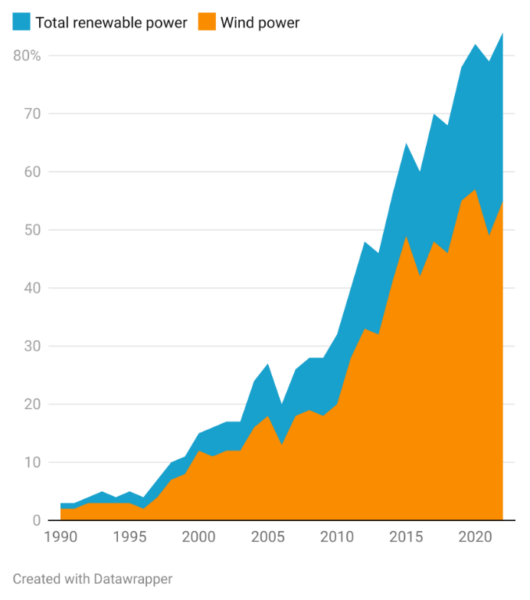Community-owned wind: Lessons from Denmark
In Denmark, renewable wind power generates 54% of all electricity. The rapid expansion of wind power has been driven by policies that ensure citizens have a financial stake in its development.

Fossil-Fuel Free Denmark
Australia has ostensibly committed to reaching “net zero emissions” by 2050, but will rely on dubious offsets to do so. Denmark, on the other hand, is set to be one of the first countries in the world to phase out fossil-fuels entirely. Renewables already generate 84% of electricity in Denmark, which is expected to reach their target of 100% renewables by 2030. This world-leading action has been enabled by policies that allow community members to own and profit from shares in wind power. This means that people are more likely to support the development of wind farms. This policy has also positioned Denmark as a leading manufacturer and exporter of wind technologies, which generates billions in export revenue and employs 2% of the labour force. Compare this to Australia, where coal mining employs a mere 0.2% of the labour force, and only 32% of power is generated from renewable sources.
Community benefits
The roll-out of wind power in Denmark is remarkable not only because of its speed and scale, but because the benefits have been shared among the community. In 2016, more than half of Denmark’s installed wind capacity was owned by citizens, rather than private companies. This means that average citizens are invested in, and profit from, the transition to clean energy. This builds on a long tradition of energy co-operatives in Denmark that goes back to the 1970s. One key policy is the 2008 Promotion of Renewable Energy Act, which created a rule that new renewable projects must offer at least 20% ownership of the overall venture to local residents.
The Middelgrunden way
A leading example of the Danish wind cooperative model is the Middelgrunden wind farm, which sits 3.5km offshore from Copenhagen. Since its establishment in 2001, this project has been 50% owned by 10,000 cooperative members, and 50% by the municipal utility country. Each cooperative share represents 1,000 kWh/year and generates a 7.5% return after depreciation – this means that the initial cost of buying a share was earned back in eight years; everything since has been profit. Since Middelgrunden, wind power has expanded fivefold in Denmark, and the community-ownership model remains popular. There are even low-interest loan programs to lower the barrier to purchasing shares in wind power.
